There is no default TableCellRenderer for BufferedImage, you're going to have to supply one
Create yourself a new class that extends from DefaultTableCellRenderer. Override the getTableCellRendererComponent method
In this method, check the value been passed in is a BufferedImage, if it is, create a instance of ImageIcon, passing the BufferedImage into it.
Use the cell renderes setIcon method, passing the new instance of ImageIcon to it
With your table instance, use the setDefaultRenderer method to associate the cell renderer with the BufferedImage class
table.setDefaultRenderer(BufferedImage.class, myInstanceOfBufferedImageCellRenderer)
Check out Using Custom Renderers for more info
Added example
So a threw a quick example together using both ideas from myself and Hovercraft.

My personally feeling is that Hovercraft's idea will use less resources and be quicker then using a cell renenderer, so long as you create a ImageIcon once for each BufferedImage and maintain that reference.
You could get the custom cell renderer to do the same, but you would need to dabble with WeakHashMaps to maintain a reference between the BufferedImage and Icon and there is still the risk that the BufferedImage in question will never be collected, leaving the Icon reference hanging around.
If you weren't doing anything special with the BufferedImage in the way of rendering, I would use Hovercraft's suggest, purly from a ease of use and resource management perspective.
public class BufferedImageTableCellRenderer {
public static void main(String[] args) {
new BufferedImageTableCellRenderer();
}
public BufferedImageTableCellRenderer() {
EventQueue.invokeLater(new Runnable() {
@Override
public void run() {
try {
UIManager.setLookAndFeel(UIManager.getSystemLookAndFeelClassName());
} catch (ClassNotFoundException | InstantiationException | IllegalAccessException | UnsupportedLookAndFeelException ex) {
}
File[] files = new File("some folder some where").listFiles(new FileFilter() {
@Override
public boolean accept(File pathname) {
String name = pathname.getName().toLowerCase();
return name.endsWith(".gif") || name.endsWith(".jpg") || name.endsWith(".png");
}
});
ImageTableModel model = new ImageTableModel();
for (File file : files) {
try {
model.add(ImageIO.read(file));
} catch (IOException ex) {
ex.printStackTrace();
}
}
JTable table = new JTable(model);
table.setRowHeight(100);
table.setDefaultRenderer(BufferedImage.class, new BufferedImageCellRenderer());
JFrame frame = new JFrame("Testing");
frame.setDefaultCloseOperation(JFrame.EXIT_ON_CLOSE);
frame.setLayout(new BorderLayout());
frame.add(new JScrollPane(table));
frame.pack();
frame.setLocationRelativeTo(null);
frame.setVisible(true);
}
});
}
public class BufferedImageCellRenderer extends DefaultTableCellRenderer {
@Override
public Component getTableCellRendererComponent(JTable table, Object value, boolean isSelected, boolean hasFocus, int row, int column) {
super.getTableCellRendererComponent(table, value, isSelected, hasFocus, row, column);
if (value instanceof BufferedImage) {
setIcon(new ImageIcon((BufferedImage)value));
setText(null);
} else {
setText("Bad image");
}
return this;
}
}
public class ImageTableModel extends AbstractTableModel {
private List<BufferedImage> images = new ArrayList<>(25);
private List<Icon> icons = new ArrayList<>(25);
@Override
public int getRowCount() {
return images.size();
}
public void add(BufferedImage image) {
images.add(image);
icons.add(new ImageIcon(image));
fireTableRowsInserted(images.size() - 1, images.size() - 1);
}
@Override
public int getColumnCount() {
return 2;
}
@Override
public Object getValueAt(int rowIndex, int columnIndex) {
Object value = null;
switch (columnIndex) {
case 0:
value = images.get(rowIndex);
break;
case 1:
value = icons.get(rowIndex);
break;
}
return value;
}
@Override
public Class<?> getColumnClass(int columnIndex) {
Class clazz = String.class;
switch (columnIndex) {
case 0:
clazz = BufferedImage.class;
break;
case 1:
clazz = Icon.class;
break;
}
return clazz;
}
@Override
public String getColumnName(int column) {
String name = null;
switch (column) {
case 0:
name = "BufferedImage";
break;
case 1:
name = "Icon";
break;
}
return name;
}
}
}
